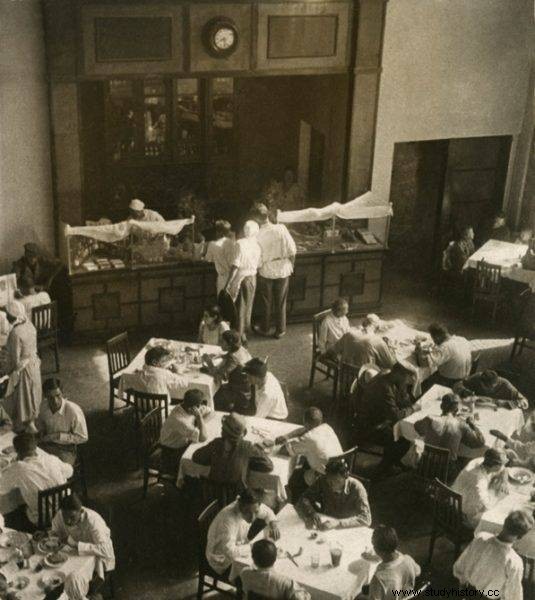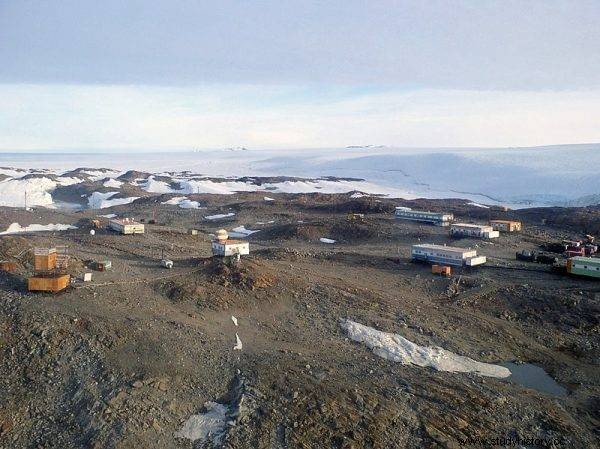Of course, the operation became a sensation on a global scale. The achievement of Rogozov made the citizens of the USSR truly proud. After all, just two weeks earlier, the world learned about Gagarin's flight into space! The Soviet citizen again - and in such a short time - accomplished the impossible and overtook the United States in the Cold War race. Another reason to admire the young […]
Of course, the operation became a sensation on a global scale. The achievement of Rogozov made the citizens of the USSR truly proud. After all, just two weeks earlier, the world learned about Gagarin's flight into space! The Soviet citizen again - and in such a short time - accomplished the impossible and overtook the United States in the Cold War race. Another reason to admire the young doctor was that life did not really spoil the hero ...
Per aspera
Lonia was born in 1934 in a small village near Lake Baikal. His father was a driver, his mother worked on a cow farm. They lived poorly. The situation of the Rogozovs became almost tragic when they were considered kulaks and sent to Alma-Ata. For many people this punishment meant death by starvation, but the relatives of the future surgeon not only managed to survive, but even returned to their homeland.
The boy had an older brother and sister; Over time, another sister appeared - Walentyna (Wala), whom Lonia took care of. After the outbreak of the Great Patriotic War, my father went to the front and died in 1943. The mother spent her days at work to feed her family. Then the responsibility to take care of the house and Wola fell on Lonia.

The situation of the Rogozovs became almost tragic when they were considered kulaks and sent to Alma-Ata.
After the war, the boy graduated from a 7-year primary school, and then entered a vocational school, where he was to master the profession of a miner . He was not really interested in this activity, but the vocational school provided accommodation and a scholarship, which allowed Rogozov to relieve his mother. As Wala recalled years later, despite the fact that he chose his profession based on common sense, her older brother applied to his studies and got only A's.
Leonid, however, dreamed of something more. He graduated from high school, then served in the army, and finally went to his brother who lived in Leningrad. The city on the Neva charmed Lonia, who decided not to return to her family home.
A lust for adventure
Rogozov became a student of one of the local medical academies. He graduated with a good position and began to prepare his doctoral dissertation. But routine work in the hospital or clinic was the last thing Lonia wanted. He fantasized about a life full of exciting events and adventures.
In the summer of 1960, news reached Leonid that a Soviet expedition to Antarctica was looking for a doctor. He immediately volunteered and went to the South Pole in the fall. The mother understood her son's wishes and gave him her blessing.
Leonid's luggage contained a lot of books and ... 32 kg weights. On his way to Antarctica, he would send postcards to his loved ones to assure them of his well-being and share his travel impressions.
Himself a surgeon and patient
At the Pole, the doctor took care of the health of the members of the expedition. On April 29, 1961, it turned out that he needed help himself - he felt pain in the right side of his abdomen, he had an increased temperature and nausea. The diagnosis was obvious:appendicitis. Rogozov realized that no one would come to his rescue, because there was a snowstorm outside, preventing the flights of planes. To reduce inflammation, Leonid took antibiotics, put cold objects on his stomach. All for nothing. The operation was inevitable.

Rogozov was the only doctor in the Soviet Novolazarevskaya polar station (pictured) while performing an operation on himself
There was no other doctor or any person with medical education at the station, so Rogozov decided to train his colleagues. Meteorologist Aleksander Artemyjew was supposed to give him the instruments, mechanic Zinowij Tieplinski was responsible for proper lighting, and Władisław Gierbowicz, head of the station, should have revived his colleagues in case one of them lost consciousness due to the impression.
Leonid disinfected the instruments, but decided to operate without gloves so as not to lose feeling in his hands. Since his abdominal cavity was blocked by his chest, Rogozov had to rely on touch and his knowledge of anatomy. During surgery, he was in a semi-sitting position with his legs raised at a 30-degree angle.
The treatment began on April 30, 1961 at 22.00 Moscow time. The assistants put on white coats. Leonid administered a painkiller himself. When it worked, at 10:15 PM he took a scalpel and made a 12 cm incision. Then his colleagues were close to fainting. To calm the terrified comrades, Rogozov joked and smiled. And then - as he recalled years later - he fully focused on the procedure, ignoring the surroundings.
At 10.30 PM he began to feel dizzy and weak. So he took a 30-second break and then… continued working. After the stitches were put in, he was given an injection of antibiotics and a sleeping aid. It was midnight. A few days later the fever dropped and it was clear the surgery was successful.
The Burden of Fame
Rogozov's feat turned out to be a sensation. When the surgeon returned to Leningrad from the South Pole in 1962, the city authorities gave him a two-room apartment. Thousands of women professed love and admiration for him, so Leonid received bags of letters. He made a close acquaintance with one of the ladies - a Czechoslovakian named Marcela - which ended in a wedding carpet.
He continued his research career at one of the Leningrad science and research institutes. The instruments he used during the memorable operation were placed in the Arctic and Antarctic Museum in the city on the Neva. The scientist died in 2000 of stomach cancer.
